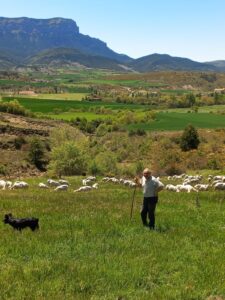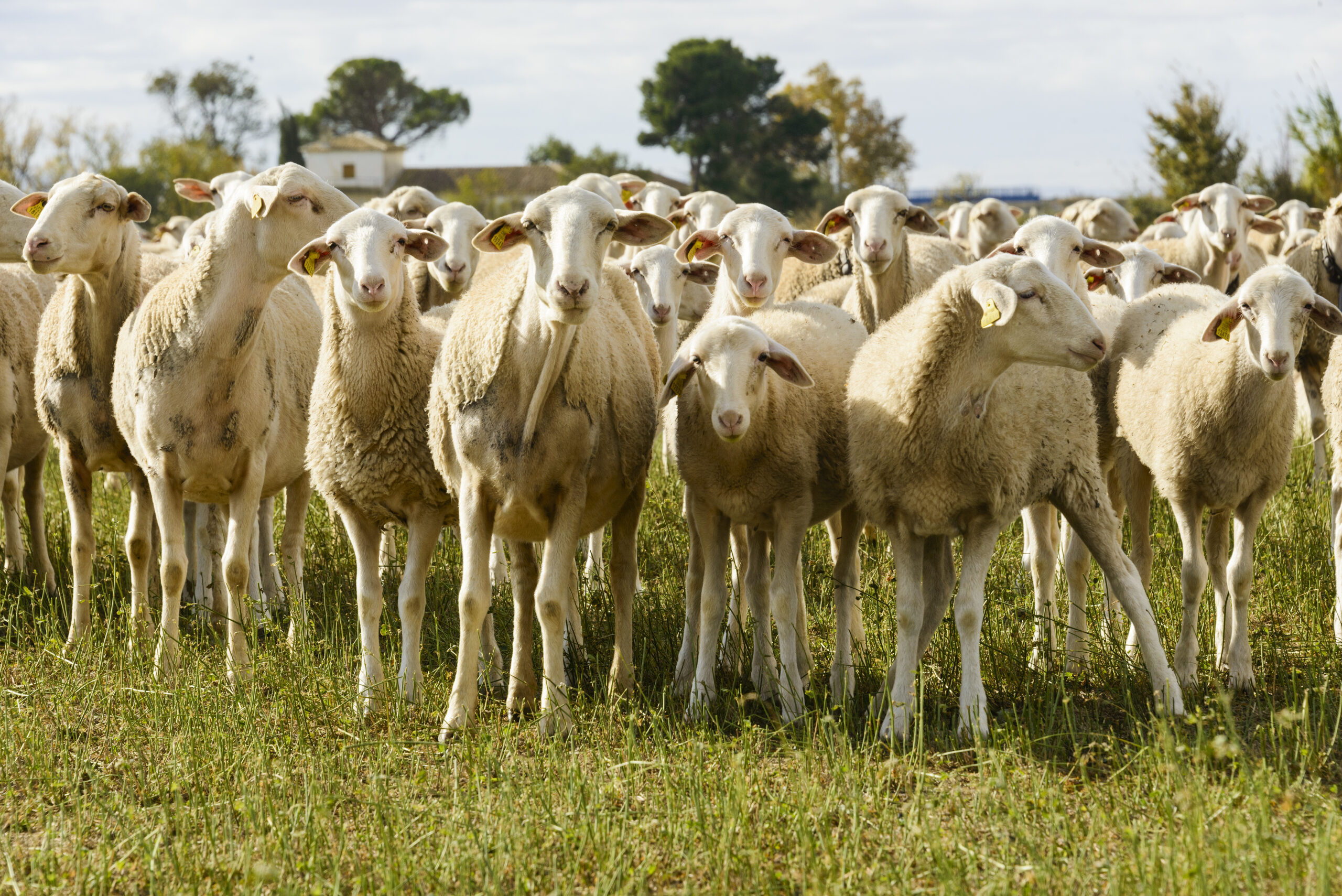Aragón is a region in Spain with a strong tradition in sheep meat production. It is home to approximately 2,200 flocks, with an average size of around 600 head, managed under semi-extensive systems. (Analysis of Extensive Livestock Farming, Government of Aragón, 2023). However, there has been an 8% decline in recent years. The flocks, predominantly composed of local breeds such as Rasa Aragonesa, Roya Bilbilitana, Maellana, Cartera, Ojinegra, Churra Tensina, and Ansotana, are managed within family farms, producing semi-light lambs of around 25 kg live weight, some of which are marketed and consumed under the Protected Geographical Indication (PGI) “Ternasco de Aragón.”
The involvement of sheep flock owners in livestock farming is around 90% relative to their total agricultural employment, which explains their high level of professionalism (over 50%). However, the average agricultural income of these operations is below the reference income in more than 80% of the farms; indeed, around two-thirds of the subsidies received are used to meet production costs.
Located in the northwest of Spain, this autonomous community covers a vast area (47,719 km²) with highly diverse geo-climatic zones. These range from the central depression of the Ebro Valley, characterized by low rainfall (350 mm/m²) and an economy primarily based on agro-industry, to the mountainous areas of the Pyrenees and the Iberian Range, and the province of Teruel with its extensive plains, continental climate, and agricultural and livestock farming as well as tourism.
Most sheep farmers feed their flocks with crops from their own dryland or irrigated hectares, significantly supplemented by grazing on large areas of cereal or legume stubble and the leasing of permanent pastures: fallow lands, forests, and highland pastures. This leads to substantial differences in pasture utilization, with an average area dedicated to stubble of 75.5 hectares per farm, reaching up to 200 hectares in some regions.
Lambs are marketed from the farm in similar proportions either through livestock cooperatives or individually by the farm, with the meat sold primarily in small shops or butcheries and in large supermarket and hypermarket chains. There is a strong tradition of lamb meat consumption in this region, although average consumption has declined in Spain from over 4.5 kg per capita at the beginning of this century to 1.5 kg in recent years. Nevertheless, Aragón remains as one of the regions in Spain with the highest level of consumption per capita.
This situation, combined with the low population density throughout the Aragonese territory, except for the capital (Zaragoza) and a dozen towns of 15,000-20,000 inhabitants, has contributed to a decline in sheep numbers from 2.5 million at the beginning of the century to just under one million today. The dependence of the traditional systems on shepherds (to manage the flocks during grazing time), who are increasingly difficult to find, the harshness of the work, and the lack of reputation within and outside the sector, is endangering its continuity. Other factors include economic dependence on CAP subsidies, which for many years have been linked to land area rather than to livestock numbers (which means that land owners get those subsidies, but not necessarily the flock owners), as well as a lack of capital and sufficient entrepreneurial spirit.
OVIARAGON Cooperative
Oviaragón SCL, a cooperative involved in lamb marketing, technical services, and supplies, was founded in 1981 with the mission of improving the profitability of sheep farms and the quality of life of farmers. It works in all areas of improvement to halt the decline in sheep numbers and the lack of generational turnover.
Since its founding, and thanks to innovation, it has developed services such as lamb classification and fattening at grading centres, the manufacture of unifeed mixes for ewes and specific formulas for lambs, and the sale of pre-packaged meat cuts, new ready-to-eat products, canned goods, and attractive options for new consumers. In collaboration with various technology centres and universities, it has worked in areas such as reproduction and genetics, health, and animal welfare. Through the monitoring of its farms using a technical-economic data recording system, it has generated a control and decision-making tool for farmers and the cooperative.
Product and service quality is a core value of the company, as is sustainable growth, which has earned it numerous awards for business development, social responsibility, quality, innovation, and entrepreneurship.
Currently, the cooperative is working to promote generational renewal within a modern, technologically advanced production model that continues to provide consumers with a product of great tradition and quality.

Oviaragón in the Life Green Sheep Project
Oviaragón, a partner in the project, works with 41 farms spread across the region, both demonstrative and innovative. Following the first phase of data collection on productive, economic, and socio-environmental aspects, the environmental impact of livestock farming has been calculated in terms of carbon footprint, identifying the sources of emissions, with 68% originating from enteric fermentation. From there, good practices have been identified that, while mitigating environmental impact and enteric methane emissions, also improve farm profitability.
Among the most efficient practices for meat sheep are those related to increasing farm productivity by reducing inefficiencies. In this regard, improving fertility by focusing on the interval between lambings, preparing and introducing ewes for breeding earlier, and attending to the health and welfare of the males is crucial. Additionally, improving prolificacy can be achieved by incorporating animals from local breeds carrying major genes (ROA), which allow the average Rasa Aragonesa prolificacy to increase from 1.3 to 1.6-1.7 lambs per birth, making it a cost-effective and environmentally sustainable practice.
Another line of work focuses on measures to achieve greater feed autonomy, which is possible to some extent through the cultivation of cereal varieties for grazing, such as rye or triticale, or the cultivation of perennial legumes that reduce the need for seeds, fertilizers, manure, and labor compared to annual crops, while also enriching the soil. Training and improvement in forage harvesting and preservation to increase yield and quality, as well as support in implementing regenerative grazing plots, are being put into practice and will be evaluated for their efficiency.
The third block of more innovative measures refers to the incorporation of anti-methanogenic additives in diets, as well as their reformulation with other products that increase the utilization of fiber, protein, and energy, reducing their excretion via urine or feces.

